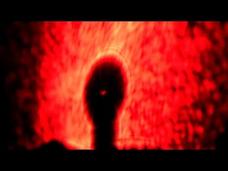FuseSchool
PHYSICS - Waves - Wave Behaviour
How do waves behave? Badly? In this video we are going to look at how light and sound waves behave. Before we start, you should know that waves can be transverse or longitudinal. Transmission, reflection, refraction, diffraction,...
Be Smart
Can You Bend Light like This?
Looking for instruction that seems more like wizardry? Look no further! Show your scholars some pretty amazing light experiments using a video from a comprehensive science playlist. The narrator performs and explains three simple yet...
American Chemical Society
How Can You See an Atom?
Seeing is believing! But, how can something as tiny as an atom be made visible? Explore the history of the atom with a video from the American Chemical Society's Reactions playlist. Content includes early concepts of the atom, as well as...
Veritasium
The Brightest Part of a Shadow Is in the Middle
Shed some light on the nature of shadows! Science sleuths investigate a 200-year-old theory that light will form a bright spot in the center of a sphere's or circle's shadow with a video from Veritasium. The resource explains the...
Crash Course
Light Is Waves: Crash Course Physics #39
Help your classes visualize light as a wave using an engaging video lesson. The 39th lesson of the Crash Course physics series highlights the characteristics of a light wave. The lesson continues by analyzing the behavior of waves...
MinutePhysics
Why are Stars Star-Shaped?
We know stars are giant balls of plasma, so why are they drawn as pointy star shapes? The video solves this mystery through an explanation of how lenses work both in our eyes and in telescopes. It also discusses the proper way to color a...
MinutePhysics
How Far Can Legolas See?
Legolas counts the number of riders on steeds at a distance of five leagues away, including knowing their colors and height, in J.R.R. Tolkien's Lord of the Rings. A video researches this possibility by starting with the...
DoodleScience
Refraction and Diffraction
Holding a conversation underwater has its challenges. Sound and light waves can travel in different mediums, but it affects their waves. The video explains the process of refraction and diffraction and how it relates to energy waves.
Berkeley University of California
Diffraction and Interference
How do you study something you can't see? The instructor in a video models an experiment that shows the wave properties of light (electromagnetic waves). The video follows another in a 14-part series that describes the features...
Bozeman Science
Bozeman Science: Physics: Wave Diffraction
In the following video, Paul Andersen explains how waves will diffract (or bend) around an obstacle or while traveling through an opening. Diffraction will be maximized when the size of the opening or obstacle matches the wavelength. [4:20]
Bozeman Science
Bozeman Science: Physics: Diffraction Effects
Paul Andersen explains how diffraction can be affected by the size of the wavelength. When waves pass through an opening or move around an obstacle, a shadow region is created. The size of the shadow zone will decrease as the wavelength...
Other
Ben's Chem Videos: Interference and Diffraction
A video with definitions and examples of inference and diffractions.
Next Vista for Learning
Next Vista for Learning: Rainbows
A short video that shows you a way to remember the order of the colors of the rainbow. [1:38]












